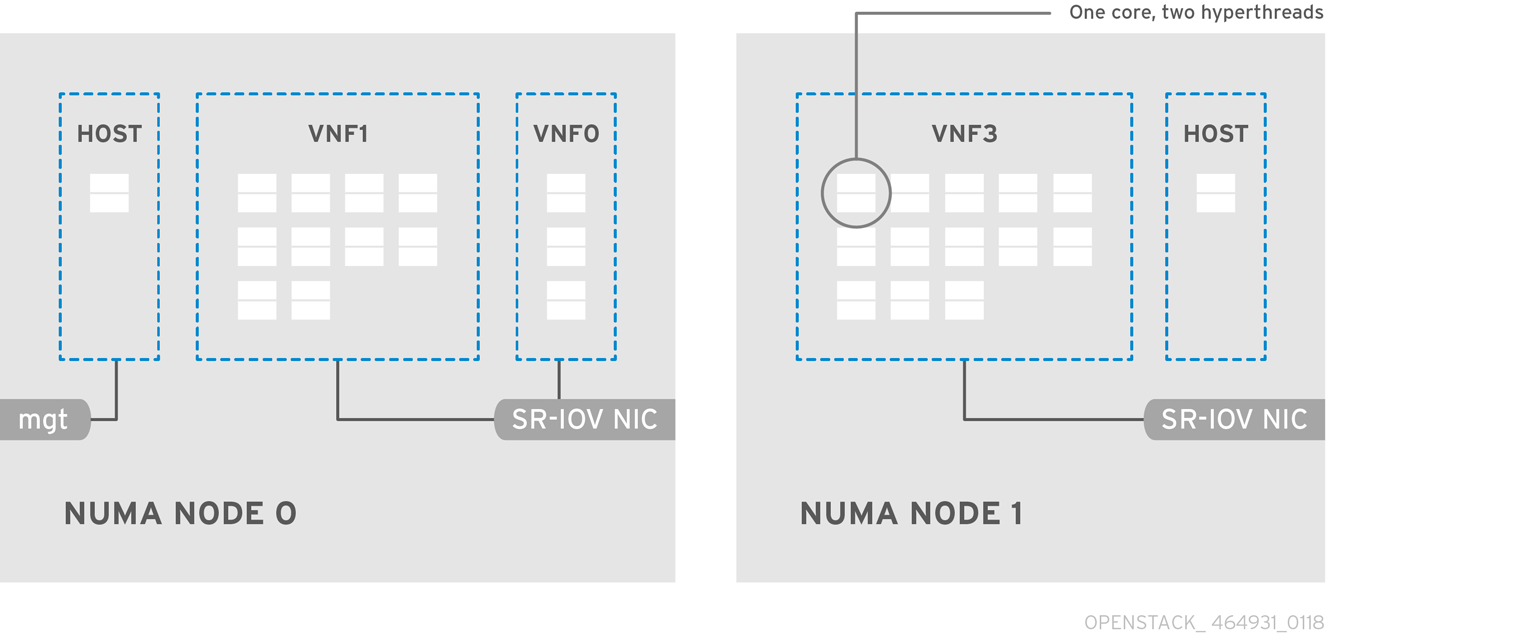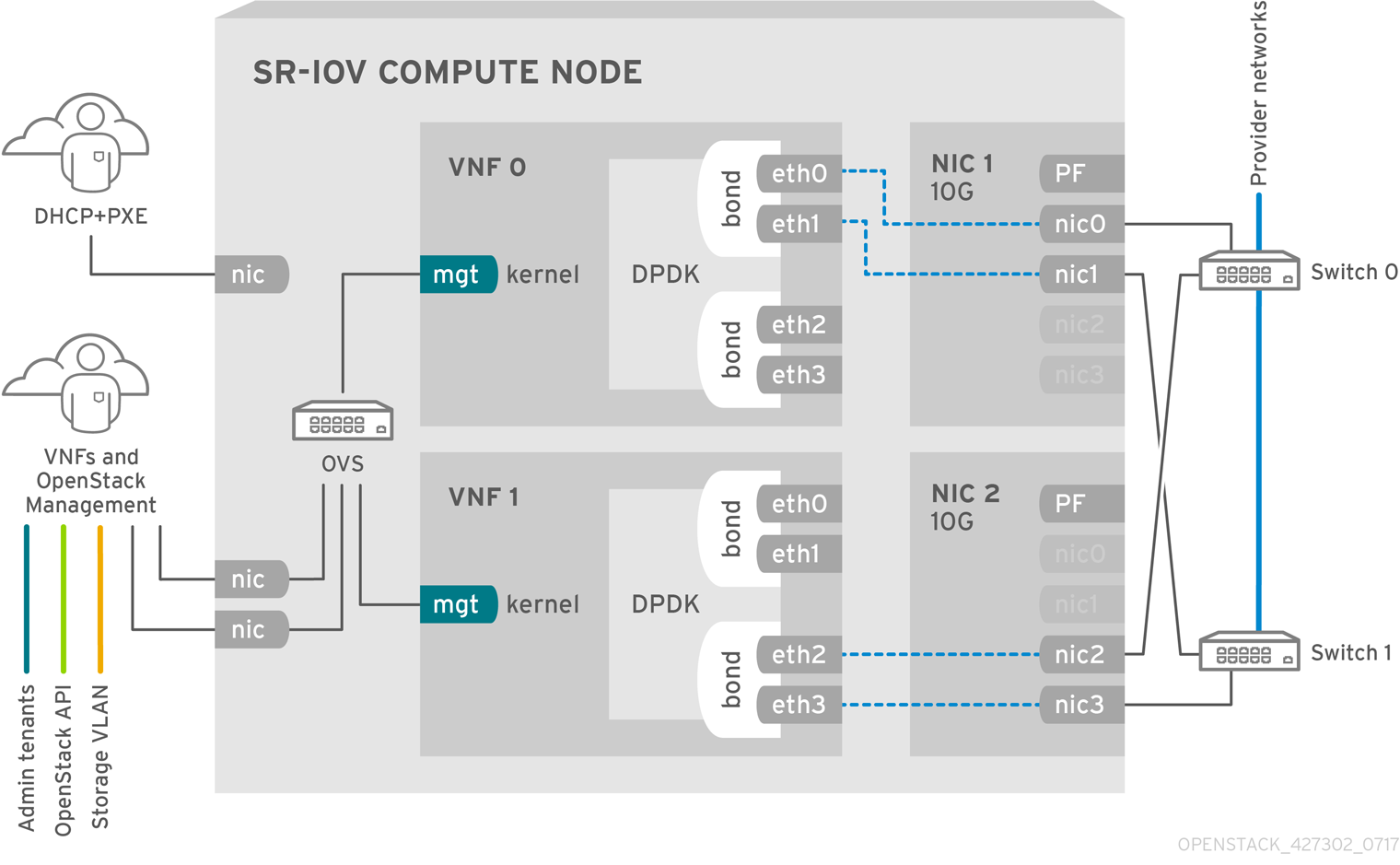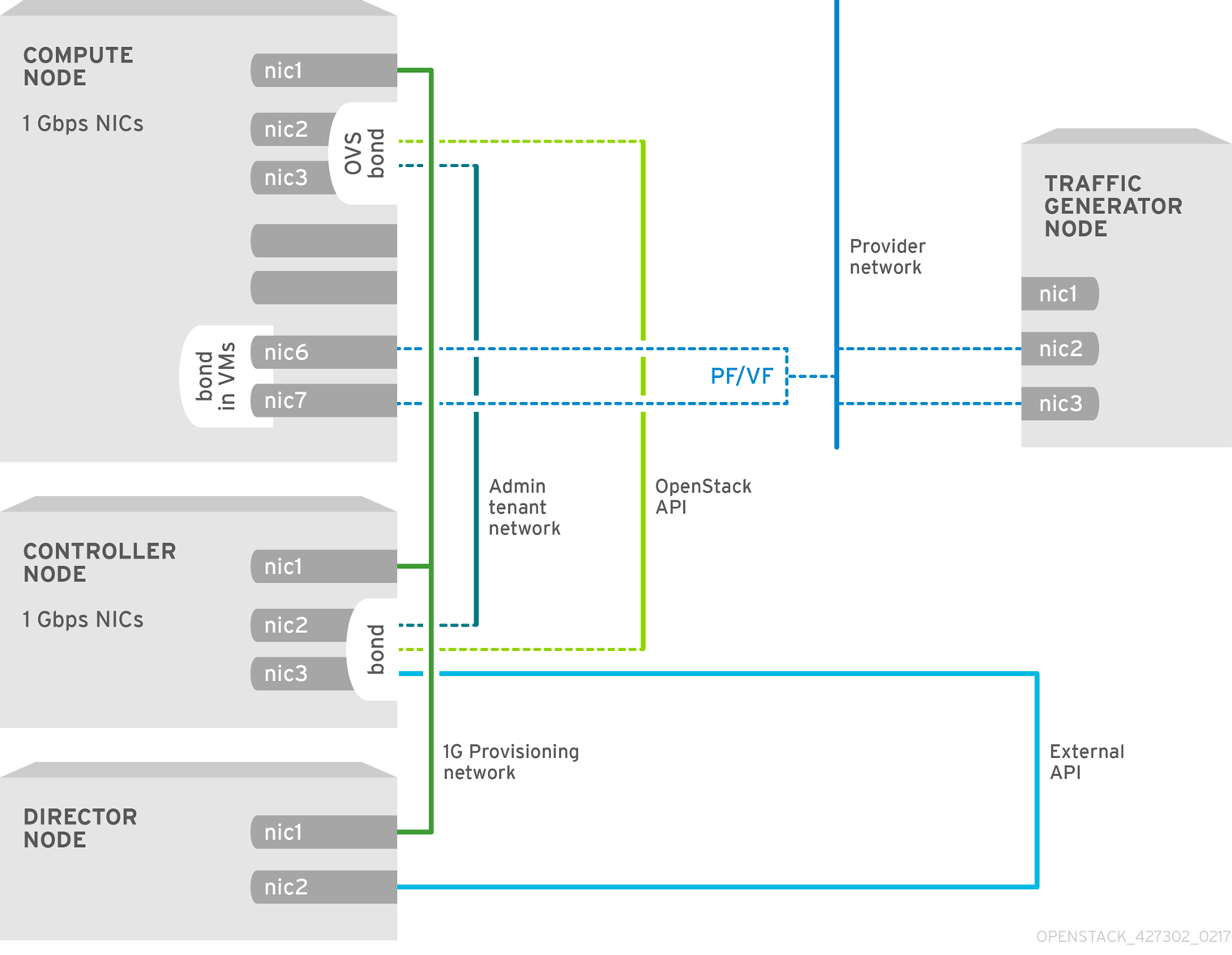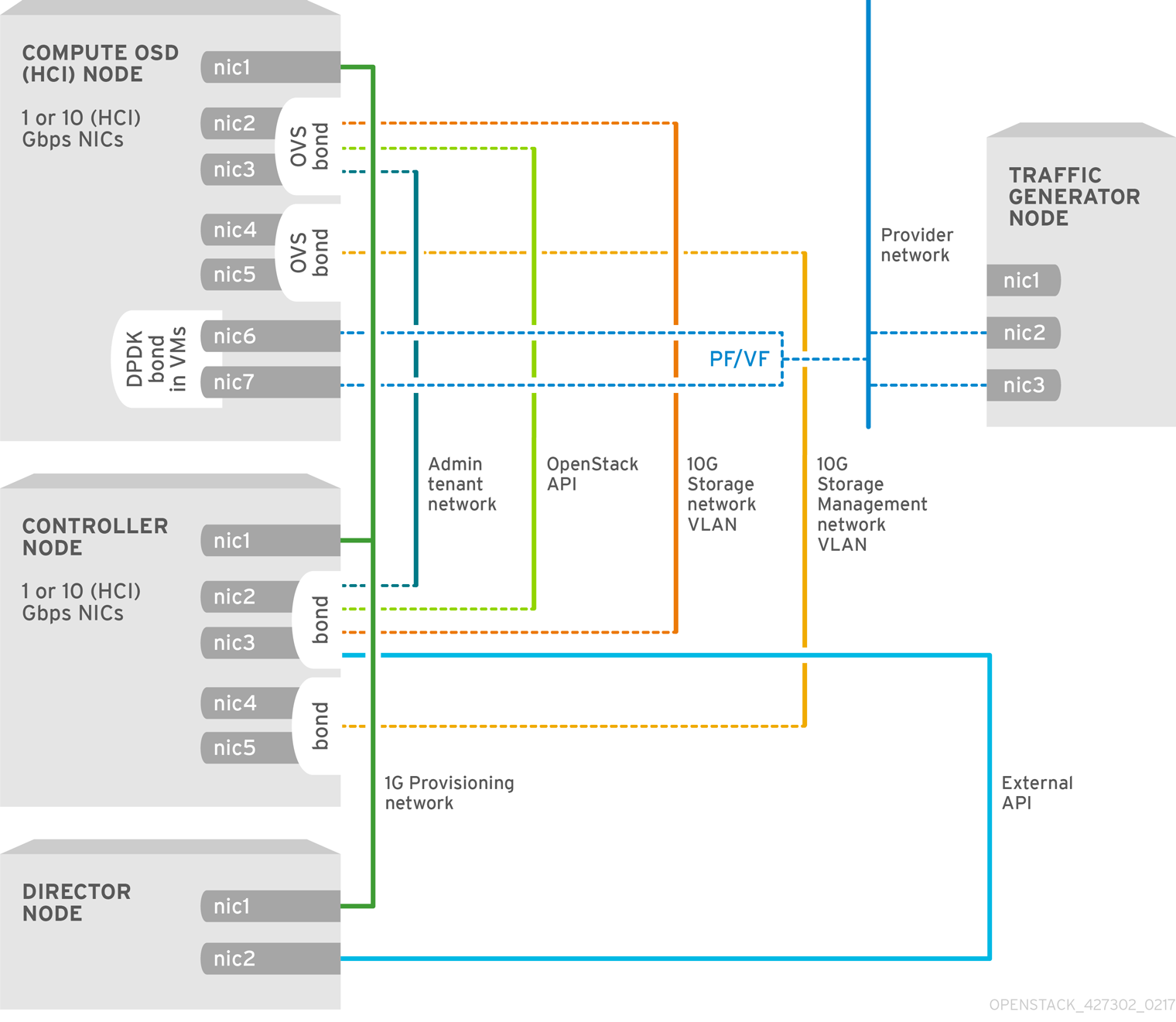이 콘텐츠는 선택한 언어로 제공되지 않습니다.
Chapter 5. Planning Your SR-IOV Deployment
To optimize your SR-IOV deployment for NFV, you should understand how to set the individual OVS-DPDK parameters based on your Compute node hardware.
See Discovering Your NUMA Node Topology to evaluate your hardware impact on the SR-IOV parameters.
5.1. Hardware Partitioning for a NFV SR-IOV Deployment
For SR-IOV, to achieve high performance, you need to partition the resources between the host and the guest.
A typical topology includes 14 cores per NUMA node on dual socket Compute nodes. Both hyper-threading (HT) and non-HT cores are supported. Each core has two sibling threads. One core is dedicated to the host on each NUMA node. The VNF handles the SR-IOV interface bonding. All the interrupt requests (IRQs) are routed on the host cores. The VNF cores are dedicated to the VNFs. They provide isolation from other VNFs as well as isolation from the host. Each VNF has to fit on a single NUMA node and use local SR-IOV NICs. This topology does not have a virtualization overhead. The host, OpenStack Networking (neutron) and Compute (nova) configuration parameters are exposed in a single file for ease, consistency and to avoid incoherences that are fatal to proper isolation, causing preemption and packet loss. The host and virtual machine isolation depend on a tuned profile, which takes care of the boot parameters and any OpenStack modifications based on the list of CPUs to isolate.
5.2. Topology of a NFV SR-IOV Deployment
The following image has two VNFs each with the management interface represented by mgt and the dataplane interfaces. The management interface manages ssh access and so on. The dataplane interfaces bonds the VNFs to DPDK to ensure high availability (VNFs bond the dataplane interfaces using the DPDK library). The image also has two redundant provider networks. The Compute node has two regular NICs bonded together and shared between the VNF management and the Red Hat OpenStack Platform API management.
The image shows a VNF that leverages DPDK at an application level and has access to SR-IOV VF/PFs, together for better availability or performance (depending on the fabric configuration). DPDK improves performance, while the VF/PF DPDK bonds support failover (availability). The VNF vendor must ensure their DPDK PMD driver supports the SR-IOV card that is being exposed as a VF/PF. The management network uses OVS so the VNF sees a mgmt network device using the standard VirtIO drivers. Operators can use that device to initially connect to the VNF and ensure their DPDK application bonds properly the two VF/PFs.
5.2.1. NFV SR-IOV without HCI
The following image shows the topology for SR-IOV without HCI for the NFV use case. It consists of Compute and Controller nodes with 1 Gbps NICs, and the Director node.
5.2.2. NFV SR-IOV with HCI
The following image shows the topology for SR-IOV with HCI for the NFV use case. It consists of Compute OSD node with HCI and a Controller node with 1 or 10 Gbps NICs, and the Director node.



